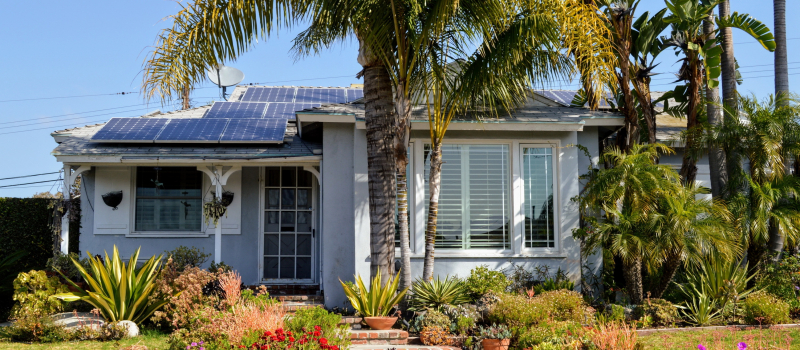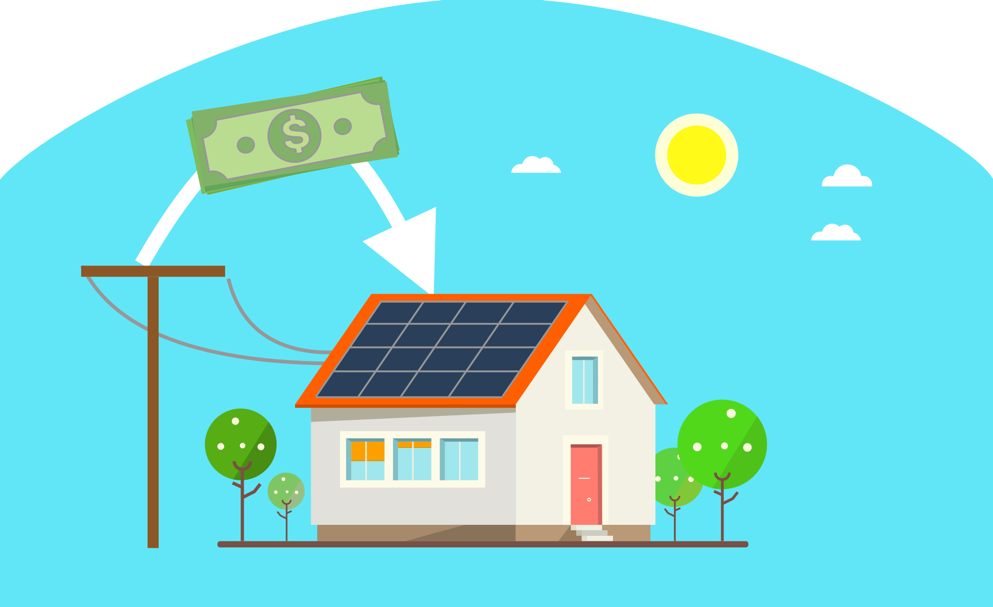What You Need to Know About California Solar Mandate in 2020
Discover how much you can save today with our solar calculator
What is The California Solar Mandate?
The 2020 California solar mandate requires that all new homes have enough rooftop solar to meet their annual energy needs. The requirement applies to any new single-family home, apartment building, or condo that is three stories or under. The California Solar Mandate took effect on Jan. 1, 2020. The rule is essentially a change to the California Building Standards for how homes are built in the state. Limited exceptions were included in the new building code for homes in the shade and for those located in areas with very low electricity rates.

Origins of the California Solar Mandate
The California Energy Commission (CEC) has been pushing for more clean energy for years. California law requires at least 50% of the grid to be sourced from clean energy by 2030. As a result, 20% of electricity in the Golden State is now solar. On top of that, 60% growth is forecast over the next five years. Other recent programs have introduced smart meters and energy efficiency updates. In some markets, there are now more electricity retailers. These and other efforts are aiming to create a cleaner grid while driving costs down over time.
California is the first state to Mandate Rooftop Solar
The 2020 solar mandate is making headlines as California becomes the first state to mandate rooftop solar. The new rule is a change to the California Building Standards for how to build homes. Limited exemptions were included in the original mandate for homes in the shade. Additionally, exemptions can be requested for those located in areas with very low electricity rates. Low utility rates make it more difficult to recoup installation costs, but this is less of an issue as solar prices have plummeted. Builders largely support the move as solar is a great selling point.
California Solar Law Brings Savings and Clean Air
With this new California solar mandate, the state says it’s doing what it can to speed up the transition to clean energy. Rooftop solar in California has already saved 6 million metric tons of carbon dioxide. Amazingly, this is equivalent to taking over 1 million cars off the road.
Going solar isn’t just about reducing greenhouse gases, it’s largely about saving money. The CEC estimates that the average system installed under the new rule will save homeowners at least $19,000 in utility costs over 30 years. If utility prices rise further, the savings will increase. Clean energy advocates say this will more than make up for the upfront costs of $10,000-15,000, depending on the size of the system.
California Solar Mandate: The facts
- The average system installed under the new rule will save homeowners at least $19,000 in utility costs over 30 years
- Solar Mandate applies to any new single-family home, apartment building, or condo that is three stories or under.
- Average Electricity bill savings is $80 per month
How Will the California Solar Panel Law Benefit homeowners?
In addition to providing clean energy savings, proponents argue that this will bring added energy security to the state as it deals with occasional outages. This is especially true when homeowners opt to tie battery storage into their home solar system. The mandate states that homes must have enough solar to meet their energy demand. Therefore, the rooftop system is already the perfect size for battery storage. Plus, the rule takes effect as solar plus storage.
New Exceptions to the Mandate
The California Energy Commission recently surprised solar advocates when it approved the Sacramento Municipal Utility District’s community solar program for new homes and businesses. Some builders and homeowners in the area will now be able to purchase solar power from the Sacramento Neighborhood SolarShares Program instead of installing rooftop solar. As a result, homebuilders may now request approval for community solar for new construction if rooftop solar wouldn’t be an option. Proponents say this change to the mandate is a justified attempt to avoid financial burdens for low-income households. Advocates for affordable housing in a time of housing shortages applaud the move. On the contrary, some say that weakening the mandate will create hesitation in the building industry right as compliance begins.
Weighing the Options: Is community solar right for you?
If applying for an exemption is on your radar, consider the differences between rooftop and community solar. A community solar site is a small solar farm that generates electricity for more than one property. These ‘solar parks’ tie into the grid, meaning that the properties that buy into it are not directly connected. In general, they are smaller than utility-scale solar. Often, they are located near the homes and businesses they benefit from. Community solar is meant to be an option when rooftop solar is not feasible. In fact, individual homeowners and businesses can still reap financial benefits. With community solar, there is a virtual net metering (VNM). VNM allows you to earn credits even if your meter doesn’t connect to the solar system. This translates to a reduction in electricity costs that all members of the community solar site share.
Disadvantage Of a Community Solar
One disadvantage of community solar is that it won’t add value to your home to the extent that rooftop solar does. Furthermore, you also wouldn’t have the option to be off the grid if you ever wanted to become energy independent with solar plus storage. Also, builders would have to find land to put the community solar farm, greatly increasing the start-up costs. With the 2020 solar mandate, there will be plenty of paperwork and review for anyone seeking an exemption.
Who is affected by California Solar Law 2020 exemptions?
If the builder wishes to buy into community solar instead of rooftop installations, they must request approval from both the CEC and the local utility company. The application must show why rooftop solar wouldn’t work with the new construction. After a review process, it is possible that they will be approved. However, they also have to show that homeowners will receive financial benefits that are similar to what they would get with rooftop solar.
California Solar Requirements and Homeowners
The changes to the California solar mandate don’t mean much if you already own a home. If you are looking into building a home or buying new, find out how much you could save by going solar. You’ll have to under the new mandate, but planning ahead and becoming well-informed can make the process less of a hassle.
Quoting multiple solar installers leads to massive savings for consumers. The cost of solar has dropped 22% over the past five years. As a result, you will more than make up for the upfront costs through utility savings. Moreover, utility rates are forecast to steadily rise, so your savings will only grow. Despite limited exceptions for community solar, it looks like rooftop solar will still be the standard as we move forward. If you are looking for energy independence and a true investment for your home, rooftop solar remains the best choice.
Ready to See How Much You Can Save with Solar?
Interested in getting exact prices for the cost solar for your home? Get competitive solar quotes from qualified, trusted installers in your area. To see an estimate for how much you could expect to save and how much a solar system would cost, try our solar calculator.





